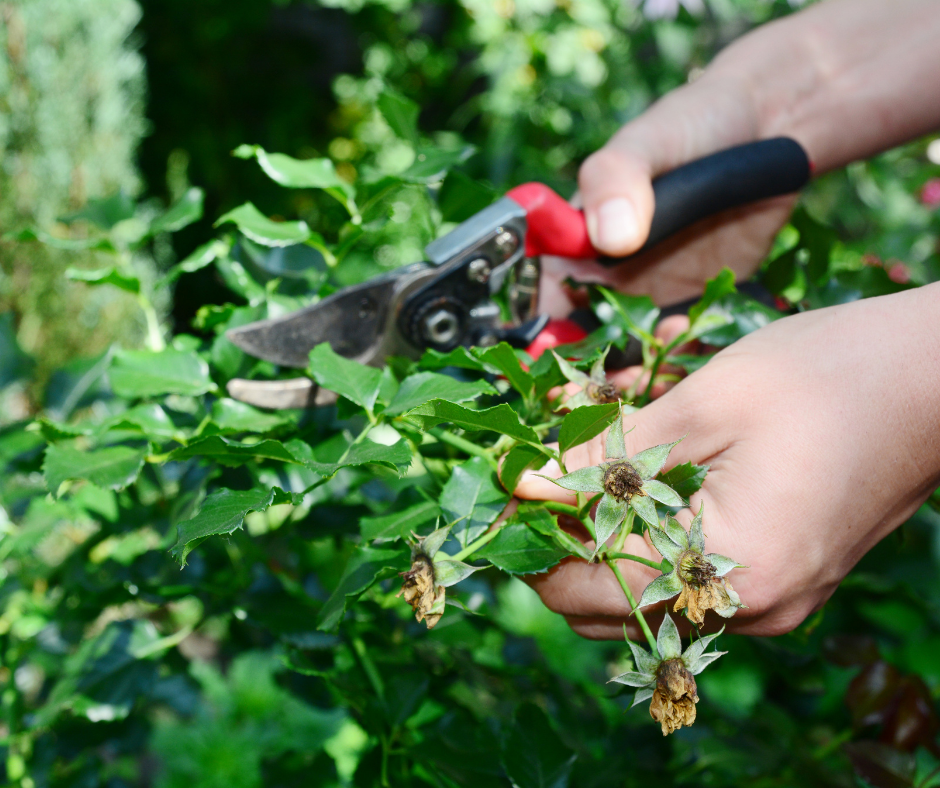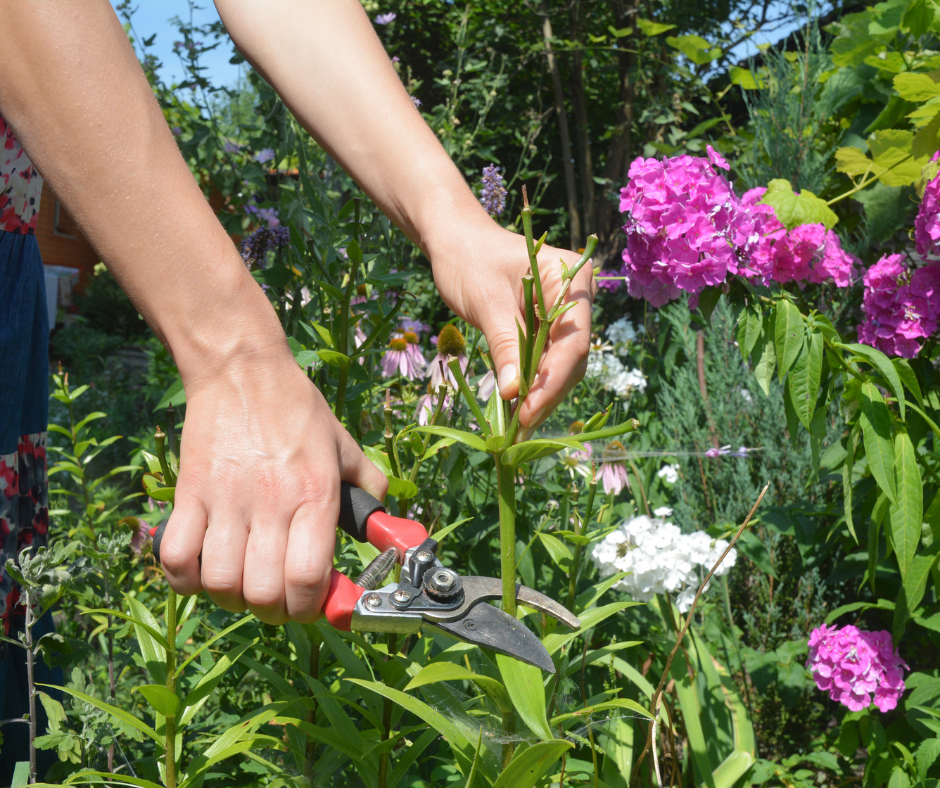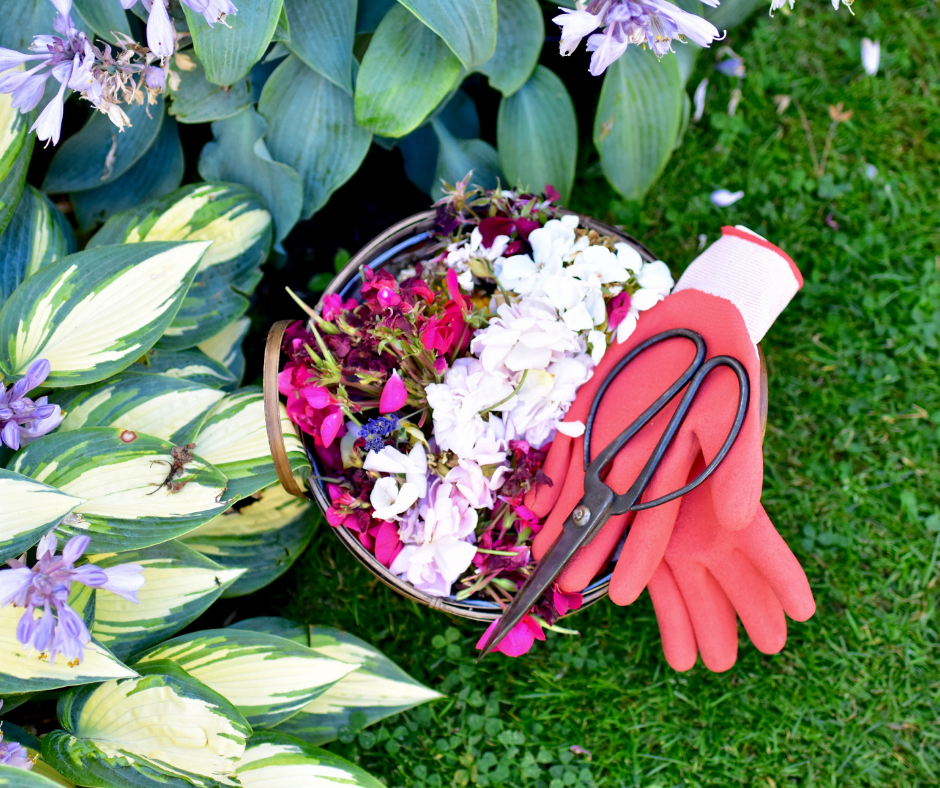All You Need to Know about Deadheading Your Flowers
By Axis Fuksman-Kumpa • January 15, 2024

Deadheading is the secret to keeping your flowers blooming and booming all season long. This technique works on annual and perennial flowering plants to push out more flowers for a beautiful and colorful growing season. All it takes is a little knowledge and a pair of garden shears to get the most out of your flowering plants. And before anyone asks, no, deadheading in gardening has nothing to do with The Grateful Dead—although what music you listen to while you water your flowers is entirely up to you.
Join our Newsletter
Sign up for our email list to receive exclusive promotions and landscape design inspiration.
What is deadheading a plant?
Deadheading flowers is simply the process of pruning away wilted flowers on your plants in order to encourage more blooms.
What are the benefits of deadheading?
After flowers wilt, your plant begins to direct all its energy into turning those spent blooms into seeds. Propagation is a plant’s primary goal, after all! The downside for flower-loving gardeners is that your plant will slow or entirely stop pushing out new flowers in favor of producing seeds.
By removing spent flowers, you redirect all your plant’s energy into creating more flowers for another chance to seed. This second bloom is also typically longer lasting than the first. You can continue this process throughout the blooming season to enjoy continual blooms, and regularly deadheaded plants will look fuller and more lush than plants left to produce seed after their first flowers.
If you’re interested in letting your flowers produce seeds, you can stop deadheading near the end of their growing season and let a last crop of flowers turn into seed heads. This can be useful if you want to collect seeds, let your plant scatter them for regrowth next season, or to feed wildlife.

Which flowers benefit from deadheading?
Deadheading can boost the growth of a wide variety of annuals and perennials. Annual flowers in particular tend to flourish with regular deadheading and fertilizing for vigorous growth. Here are a few of some of the many plants that will shine with deadheading:
- Roses
- Marigolds
- Geraniums
- Delphiniums
- Cosmos
- Daisies
- Zinnias
- Phlox
- Petunias
- Bee balm
- Salvia
This is just a start—research the care of your particular plants to see if they are well suited to being trimmed back.
With that being said, there are some plants that don’t respond well to deadheading. Some flowering plants like peonies and most bulbs will only bloom once no matter how much you trim. Most flowering vines also do better without deadheading. If you are unsure, check plants carefully by doing some research on your own to ensure you understand the proper ways to care for your plant so you have the best chances for success.
 Roses
Roses Marigolds
Marigolds Geraniums
Geraniums Delphiniums
Delphiniums Cosmos
Cosmos Daisies
Daisies Zinnias
Zinnias Phlox
Phlox Petunias
Petunias Bee Balm
Bee Balm Salvia
SalviaWhen should you deadhead?
As soon as you see those first flower buds open in the early spring, it’s time to keep those garden shears handy. Watch your garden for the first sign of wilting flowers, because that’s when it’s time to start deadheading. You want to catch these dead flowers well before they turn into dried flowers because that leaves them time to form seeds.
This process of pruning and deadheading keeps going until the end of the growing season when no more new blooms come in, but it doesn’t have to be exhausting. If you set aside time once or twice a week to pay some attention to your flowering plants and trim back any faded flowers, you’ll be basking in new blooms in no time.
HOW do you deadhead?
Ready to hit the garden? All you need is your hands and a pair of pruners—and maybe some protective garden gloves if you’re going to be deadheading roses.
Find a wilting bloom and snip the flower stem below the flower head and near the next full set of leaves. Boom—first one down. Keep deadheading spent flowers until all the dying ones are gone and your plant looks fresh and full of life.
How often should you deadhead?
Frequency of deadheading will vary among different plants. Some may require more frequent deadheading, while others will thrive with less intervention. You can alway google your specific plant to get a better idea of how frequently you should be deadheading.
What should you use to deadhead?
Some flower stalks can be pinched off with just your fingers or you can use snips for clean cuts. For woody stemmed plants like rose bushes, make sure you have a hardy set of pruners. Our team loves FELCO pruners and always keeps a pair in our gardener’s toolkit.
With this info under your belt, you’re set to have more blooms than ever this season. Do you have any more questions about pruning your plants? We’d love to help.

Common Mistakes to Avoid
To ensure your blossoms bloom with brilliance, steer clear of these common mistakes when deadheading.
- Timing is everything; waiting too long or cutting too early can disrupt the flowering cycle.
- Overenthusiastic deadheading might seem tempting, but it can rob your garden of essential foliage. Discover the delicate balance between encouraging new blooms and maintaining the overall health of your plants.
While this can seem overwhelming, it's actually pretty easy! Try it out on your plants and flowers and enjoy the fruits of your labor. There's nothing more rewarding then watching your garden bloom again!
Join our Newsletter
Sign up for our email list to receive exclusive promotions and landscape design inspiration.
About Tilly
Tilly’s easy online landscape design process has been embraced by homeowners across the country and in Canada. Tilly breaks packages into the Front Yard, Backyard or your Full Yard. We match you with a professional landscape designer who is familiar with your region to create the perfect custom plan for your outdoor space.
To start our process you’ll fill out a questionnaire about your property that helps our design team understand your goals, needs and existing landscape. You can add 3d renders, lighting plans or side yards to your design package. You’ll then meet with your designer on a video call, show them your space and discuss your priorities.
Whether you are just looking to add some curb appeal or transform your entire backyard - we have a team for you!
Read more about: Landscape Design Tips, Gardening Tips